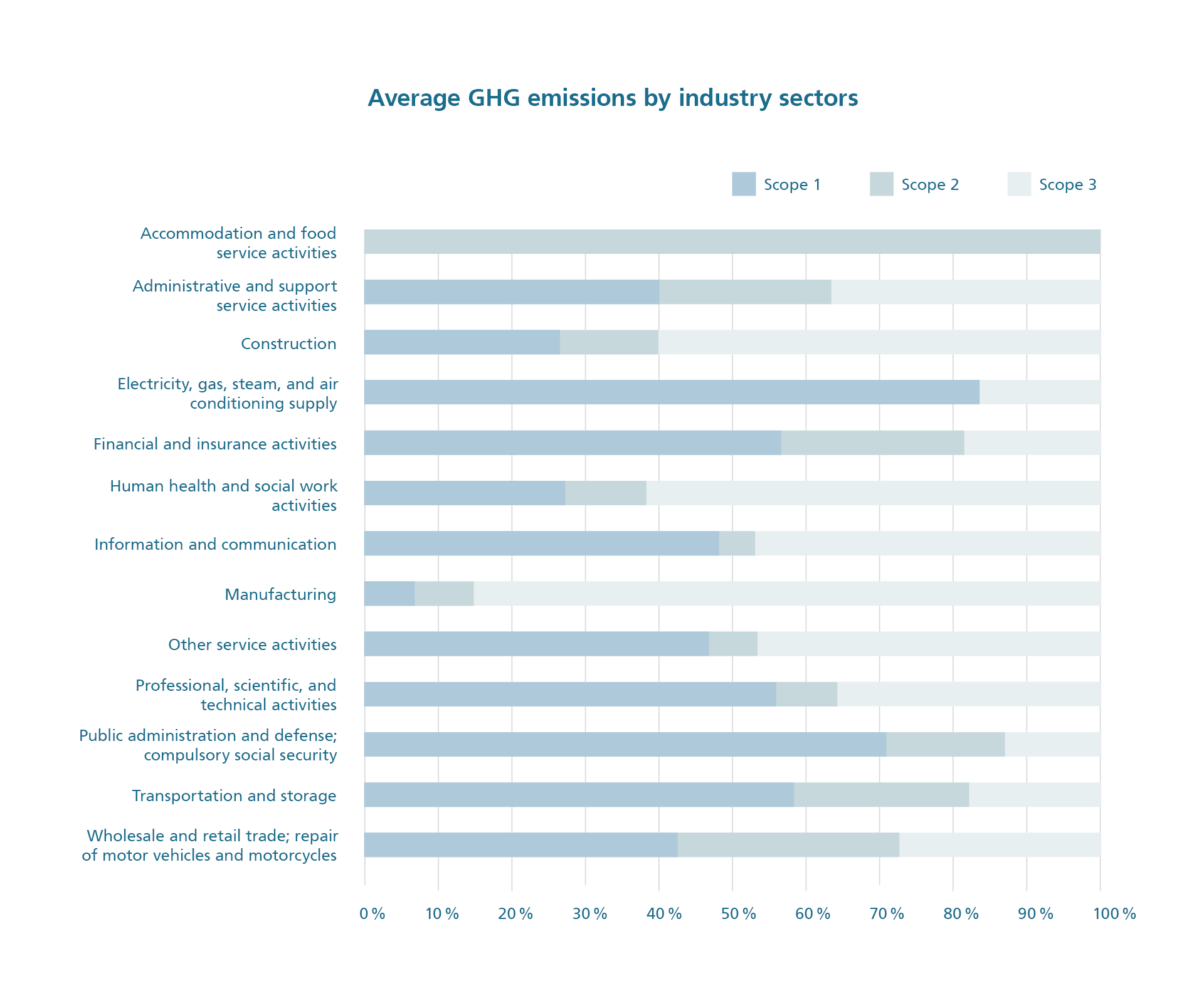A Sustainability Leaderboard
A person flying from Berlin to Munich and back for a business trip emits approximately 308 kilograms of CO2. A more environmentally friendly option is the train: Using a high-speed train such as the German ICE causes only 34 kilograms of CO2 on the same route (with an average energy mix, including green energy). However, if a business traveler works on a laptop during the train journey, the carbon footprint changes again. Electronic devices require electricity, as do data centers that keep the cloud and digital twins running. Also, CO2 emissions depend on the energy mix. But how does a company determine the ecological footprint of its employees? How much climate-harming greenhouse gas (GHG) is hidden in the raw materials, and where can emissions be reduced in the supply chain?
How Much CO2 Is Too Much?
The far-reaching consequences of climate change challenge companies to identify and subsequently minimize their negative environmental impacts. In this regard, GHG play a crucial role. Comprehensive reduction of these emissions, to the extent of achieving carbon neutrality, is demanded by both science and politics. But what does this mean exactly, and how can small and medium-sized companies transition to a carbon-free way of doing business? Is my company emitting too much for its size? How do I compare to my competitors?
These questions are the focus of the ongoing »KliMaWirtschaft« project, in which the German Association of Small and Medium- Sized Businesses (BVMW) and Fraunhofer IPK are involved. Participating companies are empowered to account for their GHG emissions in a balance document, define climate protection goals, and effectively reduce emissions through a three-part workshop series, online consultations, and a climate protection toolbox. Overall, »KliMaWirtschaft« aims to achieve a measurable reduction of 333,000 metric tons of CO2 equivalents (CO2e) within three years.
Searching for Comparability
The Greenhouse Gas Protocol serves as the comparative yardstick, an international standard for accounting and reporting greenhouse gas emissions, which differentiates between three categories known as scopes. Scope 1 deals with direct emissions at a company’s site, such as those from oil or gas heating, which can be precisely measured through meter readings or electricity bills. Scope 2 covers indirect emissions, such as purchased grid electricity or district heating. Scope 3 includes other indirect emissions generated along the value chain, including emissions from purchased goods, employee commuting, business travel, and the use of sold devices. Accounting for these emissions is naturally more challenging and often relies on modeling and estimates.
This analysis therefore displays how many previously unnoticed GHG emissions companies are responsible for along the entire value chain. It simultaneously underscores that the SME sector as a whole can make a significant contribution to a climate-friendly business approach by taking responsibility for reducing its emissions and implementing specific climate protection measures.
Industry-Specific Differences in CO2 Emissions
It’s also worth taking a closer look at the different distributions of GHG emissions in various industries. For instance, manufacturing companies traditionally consume a lot of energy and have a high material turnover. This is reflected in high GHG emissions in Scope 2 and 3. Companies in the service sector, on the other hand, have higher emissions in Scope 1 and 2 due to their primary office activities. Energy supply companies fall slightly off the grid: As primary producers of electricity or district heating that is delivered to end-users, they have both significantly higher GHG emissions and also proportionally high Scope 1 emissions.
Participating in the »KliMaWirtschaft« project is still possible for interested companies. CO2 benchmarking is also available to any company looking to transition to sustainable production. The analysis tool is an excellent starting point, even if the initial goal is just to assess how your business compares to others.
 Fraunhofer Institute for Production Systems and Design Technology
Fraunhofer Institute for Production Systems and Design Technology

